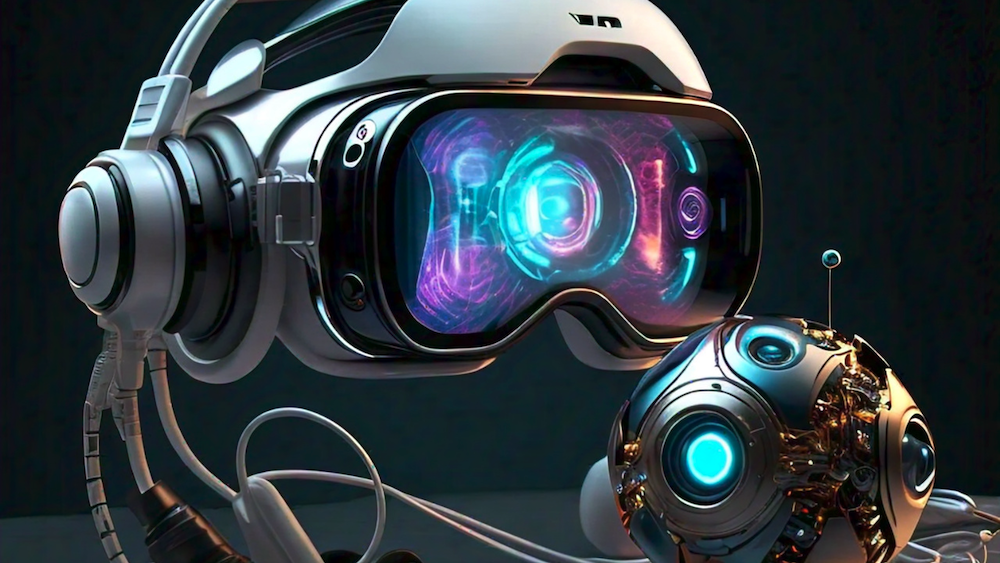Welcome back to AWE Talks, our series that revisits the best of AWE’s conference sessions. With AWE USA 2024 recently concluded, we have a fresh batch of footage to keep us busy for weeks to come.
We continue the action this week with a look at the impending XR & AI-driven future. Fresh off their new book Our Next Reality, co-authors Alvin Graylin and Louis Rosenberg break down their top findings.
See the summarized takeaways below, along with the full session video. Stay tuned for more video highlights each week and check out the full library of AWE USA 2024 sessions on AWE’s YouTube Channel.
Speakers
Brittan Heller
Alvin Graylin
Louis Rosenberg
– There are several XR books and AI books... but few that converge both themes.
– Our Next Reality looks to fill that gap, says authors Alvin Graylin and Louis Rosenberg.
– Beyond the theme, the format is also unique, framed as a virtual debate between co-authors.
– Graylin plays the optimistic role throughout, while Rosenberg raises concerns about the tech.
– According to the authors, this mitigates confirmation bias and gives readers a balanced view.
– As for takeaways, the next 10 years could have more tech transformation than the previous 100.
– The convergence of XR and AI will cause exponential change as they amplify each other.
– The physical and digital will interact (fundamental to AR) while humans and digital agents interact.
– This is exciting in its potential benefits but there's a dark side too, in terms of bad actors.
– For example, digital agents will have heightened ability to algorithmically manipulate humans.
– That manipulation can range from buying a brand of soda to swaying your vote for President.
– Meanwhile, hardware will progress from handheld to headworn as tech improves and culture adopts.
– Adoption tipping points come when a critical mass of people have devices and others feel FOMO.
– As for network architecture and interoperability, a debate pits centralized against decentralized.
– Rosenberg believes any prospective metaverse will inevitably be centralized due to vested interests.
– Graylin says we'll start centralized (for the same reason) but evolve into decentralized networks.
– This would allow interoperability for users to go between 3D experiences with a consistent identity.
– It would also be modeled after the web today with some walled gardens but common standards.
– Market forces compel decentralization as it creates bigger (more valuable) networks – Metcalfe's Law.
– As for AI, it brings equal parts opportunity and risk, given its potential power and impact.
– The consensus is that AI growth and risk are proportional. They grow in step if plotted on X/Y axes.
– However, Graylin says it could be more parabolic: after a point of evolution, AI risk (Y axis) could fall.
– This emulates a Kuzent Curve. AI risk will decrease as it becomes advanced enough to self-regulate.
For more color, see the full video below...

Want more XR insights and multimedia? ARtillery Intelligence offers an indexed and searchable library of XR intelligence known as ARtillery Pro. See more here.
Speakers
Brittan Heller
Alvin Graylin
Louis Rosenberg
– There are several XR books and AI books... but few that converge both themes.
– Our Next Reality looks to fill that gap, says authors Alvin Graylin and Louis Rosenberg.
– Beyond the theme, the format is also unique, framed as a virtual debate between co-authors.
– Graylin plays the optimistic role throughout, while Rosenberg raises concerns about the tech.
– According to the authors, this mitigates confirmation bias and gives readers a balanced view.
– As for takeaways, the next 10 years could have more tech transformation than the previous 100.
– The convergence of XR and AI will cause exponential change as they amplify each other.
– The physical and digital will interact (fundamental to AR) while humans and digital agents interact.
– This is exciting in its potential benefits but there's a dark side too, in terms of bad actors.
– For example, digital agents will have heightened ability to algorithmically manipulate humans.
– That manipulation can range from buying a brand of soda to swaying your vote for President.
– Meanwhile, hardware will progress from handheld to headworn as tech improves and culture adopts.
– Adoption tipping points come when a critical mass of people have devices and others feel FOMO.
– As for network architecture and interoperability, a debate pits centralized against decentralized.
– Rosenberg believes any prospective metaverse will inevitably be centralized due to vested interests.
– Graylin says we'll start centralized (for the same reason) but evolve into decentralized networks.
– This would allow interoperability for users to go between 3D experiences with a consistent identity.
– It would also be modeled after the web today with some walled gardens but common standards.
– Market forces compel decentralization as it creates bigger (more valuable) networks – Metcalfe's Law.
– As for AI, it brings equal parts opportunity and risk, given its potential power and impact.
– The consensus is that AI growth and risk are proportional. They grow in step if plotted on X/Y axes.
– However, Graylin says it could be more parabolic: after a point of evolution, AI risk (Y axis) could fall.
– This emulates a Kuzent Curve. AI risk will decrease as it becomes advanced enough to self-regulate.
For more color, see the full video below...
Want more XR insights and multimedia? ARtillery Intelligence offers an indexed and searchable library of XR intelligence known as ARtillery Pro. See more here.



